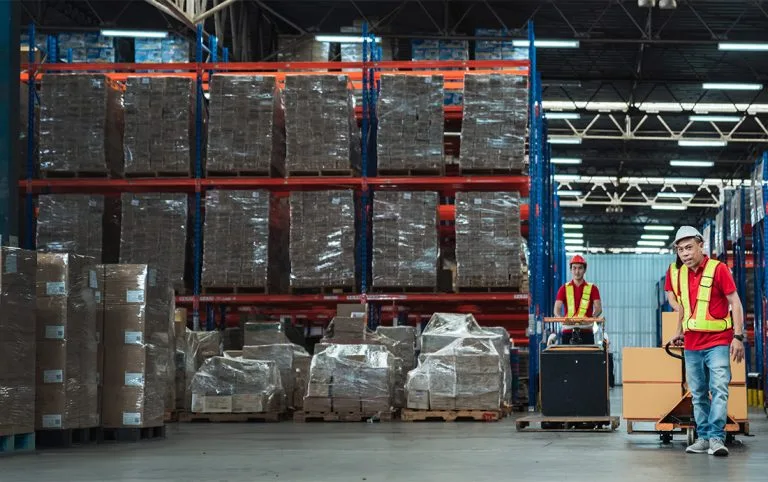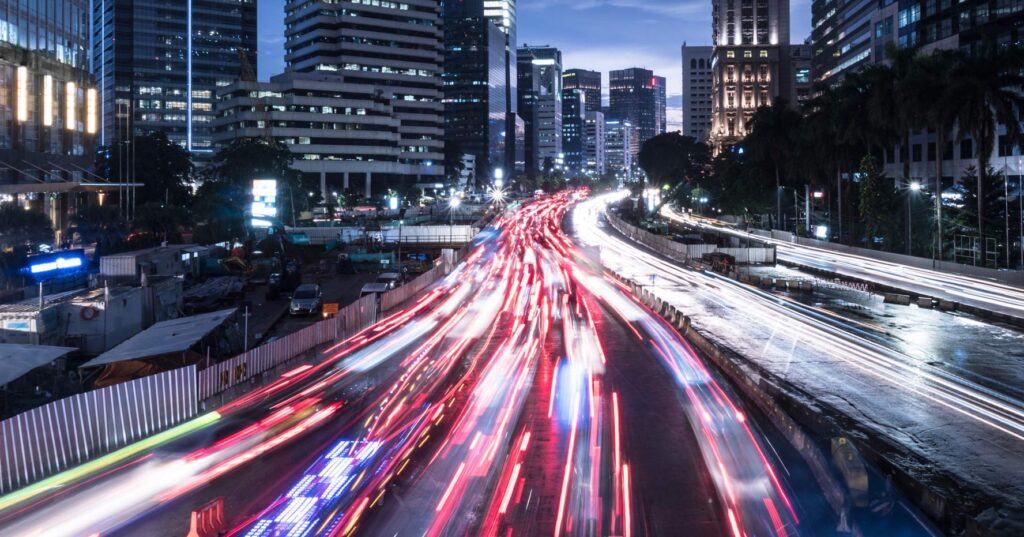Indonesia’s Evolving Logistics Infrastructure: A Gateway to Southeast Asia
As Southeast Asia continues its rapid economic growth, Indonesia—the region’s largest economy and most populous nation—is positioning itself as a vital logistics and transportation hub. With over 17,000 islands and a strategic location along key global shipping routes, Indonesia holds unparalleled potential to become a gateway to ASEAN markets and beyond.
Over the past decade, the Indonesian government and private sector have invested heavily in modernizing ports, expanding multimodal transport networks, and integrating digital logistics solutions to streamline supply chains. This evolution is transforming Indonesia into a critical player in global trade and logistics.
In this article, we explore how Indonesia’s logistics infrastructure is evolving, which sectors are benefiting, and why international businesses should pay close attention to this dynamic, high-potential market.
🌍 Strategic Location: The Heart of the Indo-Pacific
Indonesia sits at the intersection of the Indian and Pacific Oceans, giving it access to some of the world’s busiest maritime trade routes, including the Malacca Strait, which handles roughly 40% of global trade traffic.
Its centrality makes Indonesia a natural logistics base for regional and global operations:
-
Proximity to ASEAN markets (Vietnam, Thailand, Malaysia, Singapore)
-
Access to China, India, Australia, and the Middle East
-
Ideal for transshipment, consolidation, and last-mile delivery to the archipelago and beyond
According to ASEAN Logistics Network, Indonesia is increasingly viewed as a logistics hub that connects not just domestic islands but regional economies.
🚢 Modern Ports Driving Maritime Excellence
Indonesia has made significant strides in upgrading its port infrastructure, especially through Pelindo (Indonesia Port Corporation) and government-backed projects under the National Logistics Ecosystem (NLE) and Sea Toll Program (Tol Laut).
Key Port Developments:
-
Tanjung Priok Port (Jakarta): The busiest and most advanced port in Indonesia, accounting for over 50% of all container traffic. Recent upgrades include automated cranes and improved digital tracking systems.
-
Patimban Port (West Java): A newly built deep-sea port aimed at easing congestion in Jakarta and boosting automotive exports.
-
Tanjung Perak (Surabaya) and Belawan (Medan): Major regional ports being digitized and expanded to handle growing cargo volumes.
🧭 Learn more about the major ports at Indonesia Port Corporations – Pelindo.
🚛 Land-Based Logistics: Multimodal Expansion and Connectivity
As a country spread across vast islands, Indonesia’s multimodal logistics capabilities—especially land transport—are critical for efficient movement of goods.
National Infrastructure Improvements:
-
Trans-Java Toll Road: Over 1,000 km of toll roads now connect Jakarta with Surabaya, reducing delivery times and logistics costs by up to 30%.
-
Trans-Sumatra Highway: Underway to connect key industrial zones in Sumatra with export ports.
-
Rail Cargo Projects: Freight rail modernization is underway, especially for industrial supply chains in Java.
These infrastructure upgrades support efficient cargo movement between ports, manufacturing zones, and retail hubs, making Indonesia more attractive to third-party logistics providers (3PLs) and international investors.
💡 For tailored guidance on navigating inland logistics, visit indonesia-agent.com/logistics-services.
📦 Air Cargo and E-Commerce Logistics Growth
Indonesia’s e-commerce boom—driven by platforms like Tokopedia, Shopee, and Lazada—has created massive demand for air cargo and last-mile delivery services.
Trends:
-
Expansion of cargo terminals at airports like Soekarno-Hatta (Jakarta) and Juanda (Surabaya).
-
Rise of fulfillment centers and automated sorting hubs in urban areas.
-
Growth in express logistics startups and B2C courier services.
International brands entering the Indonesian market now rely on agile third-party logistics (3PLs) with domestic expertise to navigate last-mile delivery challenges across remote regions.
📦 Want to partner with reliable e-commerce fulfillment providers? Explore services at indonesia-agent.com/partner-network.
🔗 The National Logistics Ecosystem (NLE)
Launched by the Ministry of Finance, the NLE is a flagship initiative designed to integrate logistics systems, reduce red tape, and improve inter-agency coordination across sea, land, and air transport.
Goals of NLE:
-
Reduce dwell times at ports to below 2.5 days
-
Eliminate duplicate documentation through a single digital platform
-
Promote data sharing between customs, ports, logistics operators, and shipping lines
-
Enable real-time cargo tracking and customs clearance
Businesses using the NLE platform experience reduced costs and smoother end-to-end logistics, especially for import/export operations.
👉 Learn more about the NLE at Indonesia’s Coordinating Ministry for Economic Affairs.
📉 Logistics Challenges & Ongoing Reforms
Despite the positive momentum, Indonesia still faces key logistics challenges that affect cost and efficiency:
-
High inter-island shipping costs
-
Fragmented warehousing and cold chain infrastructure
-
Regional disparities in road and rail access
-
Bureaucratic hurdles in licensing and customs clearance
The government, supported by international development agencies, continues to tackle these issues through:
-
Customs reforms and automation
-
Public-private partnerships in infrastructure
-
Foreign investment incentives for logistics tech
📍 At indonesia-agent.com/business-setup, we help foreign logistics firms navigate these challenges and establish operations in high-growth regions.
💡 Smart Logistics & Technology Adoption
Indonesia’s logistics future is digital. Major logistics players are investing in:
-
AI-driven demand forecasting
-
Route optimization software
-
IoT-enabled fleet and warehouse monitoring
-
Blockchain for shipment tracking and smart contracts
Logistics tech startups are also emerging in Jakarta, Bandung, and Surabaya, driving automation, real-time visibility, and cost efficiency.
These innovations make it easier for global brands to build resilient and scalable supply chains within Indonesia.
Explore our digital supply chain insights to stay ahead of the curve.
📈 Why Global Firms Are Investing in Indonesia’s Logistics Sector
Foreign investors are increasingly looking at Indonesia’s logistics ecosystem as a long-term growth opportunity, driven by:
-
A rising middle class and e-commerce demand
-
A central position in ASEAN supply chains
-
Strong government support for infrastructure and digitalization
-
Access to fast-growing industrial parks and special economic zones (SEZs)
Major international logistics brands have already entered or expanded operations in Indonesia, and partnership opportunities abound for freight forwarders, warehouse developers, technology providers, and B2B services.
🛫 Need support with market entry, site selection, or partner sourcing? Let indonesia-agent.com help you launch your logistics strategy in Indonesia.
✅ Conclusion: Indonesia’s Logistics Future Is Now
Indonesia’s logistics sector is undergoing a historic transformation. From modernized ports and expanded toll roads to digital innovation and integrated platforms like the NLE, the country is unlocking its full potential as a regional logistics powerhouse.
For global companies in manufacturing, retail, trade, and e-commerce, the time to invest in Indonesia’s logistics infrastructure is now. By partnering with experienced local agents, understanding the regulatory environment, and leveraging technology, businesses can gain a significant competitive edge in the Indonesian and Southeast Asian markets.
🔗 Useful Links & Resources
📩 Ready to expand your logistics operations in Indonesia?
Visit indonesia-agent.com/contact for a personalized consultation.

